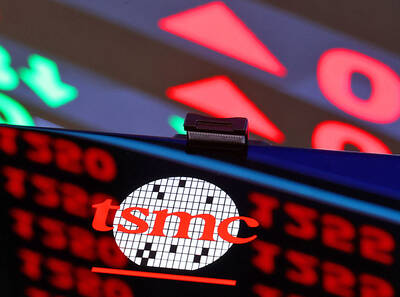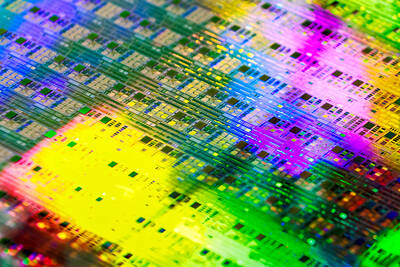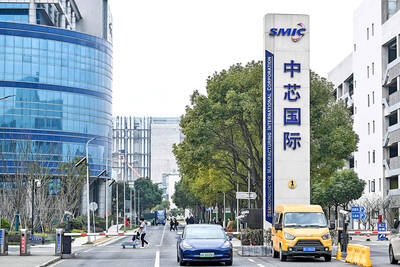The euro rose against a majority of its most-traded counterparts as an agreement on a second international bailout for Greece reduced investor concern the region’s debt crisis will worsen.
The 17-nation currency reached a three-month high against the yen this week and broke through key technical levels against its Japanese and US peers.
The US dollar dropped against its higher-yielding counterparts as reports showed an improving economic recovery, dampening demand for safety.
Currencies of commodity-exporting countries rallied as oil surged and volatility fell to a three-year low. The European Central Bank (ECB) will offer banks unlimited three-year loans next week.
“There was some optimism following the Greek deal and optimism ahead of next week’s second liquidity tender by the ECB,” said Omer Esiner, chief market analyst in Washington at Commonwealth Foreign Exchange Inc. “The euro is rallying and all gauges of risk appetite are pointing to a risk-on week, whether it’s the Australian dollar, the New Zealand dollar, crude oil or the [US] dollar being down.”
The euro rose 2.3 percent to US$1.3448, reaching US$1.3487, the highest level since Dec. 2. It rallied 4.4 percent to ¥109.18, reaching ¥109.25 on Friday for the first time since Oct. 31. The yen weakened 2.1 percent to ¥81.20 per US dollar and touched ¥81.22, the weakest level since July.
The implied volatility of three-month options on G7 currencies as tracked by the JPMorgan G7 Volatility Index fell to 9.71 percent on Friday, the least since Aug. 8, 2008, as options traders scaled back the risk of large exchange-rate swings. Lower volatility makes investments in currencies with higher benchmark rates more attractive because the risk in such trades is that market moves will erase profits.
The Swiss franc led gains against the US dollar among the 16 most-traded currencies tracked by Bloomberg. The currency appreciated 2.6 percent to SF0.8960 against the greenback and gained 0.3 percent to SF1.2051 per euro.
Meanwhile, the pound fell the most in eight months versus the euro this week as Bank of England (BOE) minutes showed two policymakers voted for a larger increase in asset purchases than agreed at this month’s meeting.
Gilts advanced after Bank of England policymaker David Miles said he and Adam Posen voted to add £75 billion (US$119 billion) to the central bank’s stimulus plan because the economy is in a “precarious situation.” The Monetary Policy Committee finally agreed on a £50 billion increase. Sterling fell to a two-month low against the euro as a report confirmed Britian’s GDP shrank last quarter.
The pound depreciated 2.3 percent this week to £0.849 per euro at 4:11pm London time on Friday, the biggest weekly drop since June 3.

SEMICONDUCTOR SERVICES: A company executive said that Taiwanese firms must think about how to participate in global supply chains and lift their competitiveness Taiwan Semiconductor Manufacturing Co (TSMC, 台積電) yesterday said it expects to launch its first multifunctional service center in Pingtung County in the middle of 2027, in a bid to foster a resilient high-tech facility construction ecosystem. TSMC broached the idea of creating a center two or three years ago when it started building new manufacturing capacity in the US and Japan, the company said. The center, dubbed an “ecosystem park,” would assist local manufacturing facility construction partners to upgrade their capabilities and secure more deals from other global chipmakers such as Intel Corp, Micron Technology Inc and Infineon Technologies AG, TSMC said. It

NO BREAKTHROUGH? More substantial ‘deliverables,’ such as tariff reductions, would likely be saved for a meeting between Trump and Xi later this year, a trade expert said China launched two probes targeting the US semiconductor sector on Saturday ahead of talks between the two nations in Spain this week on trade, national security and the ownership of social media platform TikTok. China’s Ministry of Commerce announced an anti-dumping investigation into certain analog integrated circuits (ICs) imported from the US. The investigation is to target some commodity interface ICs and gate driver ICs, which are commonly made by US companies such as Texas Instruments Inc and ON Semiconductor Corp. The ministry also announced an anti-discrimination probe into US measures against China’s chip sector. US measures such as export curbs and tariffs

The US on Friday penalized two Chinese firms that acquired US chipmaking equipment for China’s top chipmaker, Semiconductor Manufacturing International Corp (SMIC, 中芯國際), including them among 32 entities that were added to the US Department of Commerce’s restricted trade list, a US government posting showed. Twenty-three of the 32 are in China. GMC Semiconductor Technology (Wuxi) Co (吉姆西半導體科技) and Jicun Semiconductor Technology (Shanghai) Co (吉存半導體科技) were placed on the list, formally known as the Entity List, for acquiring equipment for SMIC Northern Integrated Circuit Manufacturing (Beijing) Corp (中芯北方積體電路) and Semiconductor Manufacturing International (Beijing) Corp (中芯北京), the US Federal Register posting said. The

India’s ban of online money-based games could drive addicts to unregulated apps and offshore platforms that pose new financial and social risks, fantasy-sports gaming experts say. Indian Prime Minister Narendra Modi’s government banned real-money online games late last month, citing financial losses and addiction, leading to a shutdown of many apps offering paid fantasy cricket, rummy and poker games. “Many will move to offshore platforms, because of the addictive nature — they will find alternate means to get that dopamine hit,” said Viren Hemrajani, a Mumbai-based fantasy cricket analyst. “It [also] leads to fraud and scams, because everything is now